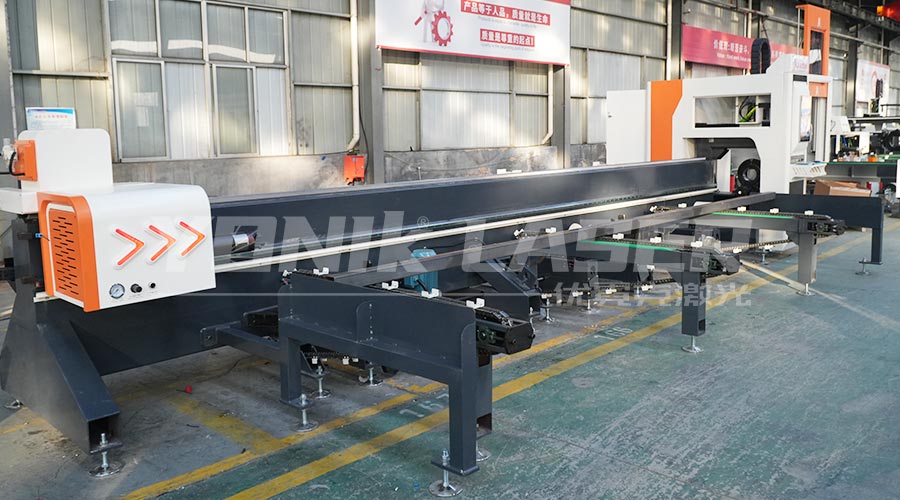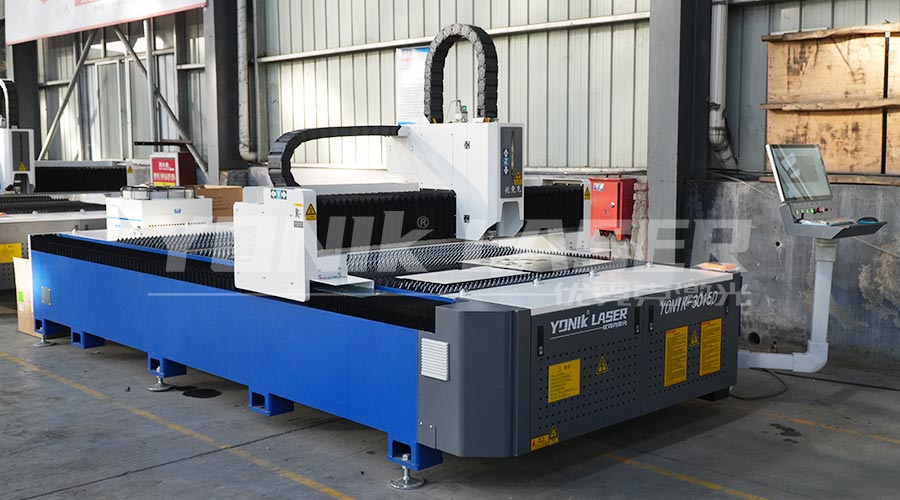The innovation of laser cutting technology has always revolved around "higher efficiency and lower cost", and the technological competition between fiber lasers and CO2 lasers directly determines the changing landscape of the metal processing industry. Data shows that fiber laser cutting machines have a 300% increase in efficiency compared to CO2 models in the field of thin plate processing, but CO2 models still have an advantage when cutting stainless steel above 20mm. This article will delve into 11 core differences between two types of devices to help you accurately choose the most suitable productivity tool!

1、 Principle of Laser Generation: Electronic Transition vs. Molecular Vibration
The underlying logic of fiber lasers relies on the energy level transitions of rare earth elements, such as ytterbium ions. When the pump light source excites the active ions in the doped fiber, the electrons fall back from high energy level to low energy level and release 1070nm wavelength laser. The photoelectric conversion efficiency of this "solid-state excitation" mode can reach over 35%.
The CO2 laser excites the vibrational energy level changes of carbon dioxide molecules through gas discharge, producing a 10600nm long wavelength laser. The mixed gas (CO ₂/N ₂/He) continuously collides in the radio frequency electric field, but the energy conversion efficiency is only 8% -12%, and a large amount of electrical energy is converted into thermal energy for dissipation.
Actual combat impact:
Fiber optic models have a 60% lower power consumption per kilowatt compared to CO2 models, resulting in unexpected savings in long-term processing electricity costs
The 10.6 μ m wavelength of CO2 laser is more easily absorbed by non-metallic materials (wood, acrylic), making it suitable for special industry applications
2、 Beam transmission path: flexible fiber VS rigid mirror group
Fiber laser adopts an all fiber transmission system, and the energy transmission from the resonant cavity to the cutting head is completed through a single-mode fiber with a diameter of ≤ 50 μ m. The beam quality M ² is less than 1.1, and the transmission loss is less than 0.1dB/km. This "integrated optical path" design completely eliminates the risk of lens contamination, especially suitable for cutting high reactive materials such as aluminum and copper.
CO2 laser relies on a complex lens reflection system, requiring 45 ° folding mirrors to be installed every 1.5-2 meters. Even with the use of gold film lenses (reflectivity of 98.5%), 1.5% of energy will still be lost after each reflection, and the total loss of a 10 meter optical path can reach 20%. Dust of 0.1 μ m on the surface of the lens will cause a 5% power attenuation.
Comparison of maintenance costs:
Fiber optic models have an annual lens maintenance cost of less than 2000 yuan, while CO2 models require 15000 to 20000 yuan for the same operating conditions
CO2 equipment must calibrate the coaxiality of the optical path every 400 hours of operation, which is not required for fiber optic models
3、 Cutting ability boundary: speed vs thickness
In the cutting of 1-6mm carbon steel, the speed advantage of fiber laser is extremely obvious:
1mm board cutting speed: fiber optic models can reach 60m/min, CO2 models only 20m/min
6mm board nitrogen cutting: fiber optic equipment speed 18m/min, CO2 equipment needs to be reduced to 8m/min
But when the material thickness exceeds 20mm, the "thermal conduction cutting" characteristics of CO2 laser begin to show advantages:
25mm stainless steel cutting: CO2 laser taper can be controlled within 0.5 °, fiber optic models up to 1.2 °
30mm aluminum alloy cutting: CO2 equipment section roughness Ra ≤ 6.3 μ m, fiber optic model Ra>12.5 μ m
Selection decision point:
Thin plate/high reactive material fiber selection: marginal benefits brought by efficiency improvement far exceed equipment price differences
Thick plate/non-metal CO2 selection: beam wavelength characteristics determine irreplaceability
4、 Operating cost structure: consumables vs. electricity
Calculated based on 2000 hours of annual operation of a 3000W device:
Fiber laser:
Electricity fee: 0.8 yuan/kWh x 15 kWh/hour x 2000h=24000 yuan
Consumables: Only need to replace protective lenses (6 pieces per year x 200 yuan)=1200 yuan
CO2 laser:
Electricity fee: 0.8 yuan/kWh x 40 kWh/hour x 2000h=64000 yuan
Consumables: Resonant cavity gas (replaced 4 times a year x 3000 yuan)+Lens assembly (2 sets per year x 5000 yuan)=22000 yuan
Five year total cost difference:
Fiber optic models (purchase price+operation) save ≥ 800000 yuan compared to CO2 models, disruptive advantages promote market replacement
5、 Technological Evolution Direction: Intelligence vs. Specialization
Fiber laser cutting machine breakthroughs in the field of "ultrafast laser":
Equipped with a 100kW pulse laser, achieving 0.01mm precision etching
Integrated AI visual positioning system to automatically compensate for deformation errors in sheet metal
CO2 lasers continue to be deeply cultivated in special processing scenarios:
Develop a 9.3 μ m band laser to improve the cutting accuracy of glass and ceramics
Adopting diffusion cooling technology to increase the electro-optical efficiency to 15%
Prediction of future pattern:
80% of the general metal processing market will be covered by fiber optic models
CO2 laser builds technological barriers in the fields of aerospace composite materials and microelectronic packaging
Conclusion: Choice is more important than effort
The key to understanding the essential differences between two types of devices is to identify their own business needs:
Sheet metal processing factory: prioritize the configuration of fiber optic equipment, focusing on batch cutting of 1-12mm carbon steel/stainless steel
Heavy Machinery Factory: Retain CO2 equipment to process 20-50mm thick plates and castings for edge trimming
Precision Electronics Factory: Adopting a hybrid solution, cutting metal structural components with fiber optic equipment, and processing insulated ceramic substrates with CO2 equipment
Immediate action: Click to obtain the "Laser Cutting Equipment Selection Evaluation Model", enter parameters such as material type, thickness, and output, and automatically generate the optimal equipment configuration plan! Follow us and stay up-to-date with the latest developments in global laser technology.

Related keywords: fiber and CO2 laser comparison, solid-state laser principle, high anti material cutting solution, thick plate laser cutting technology, laser equipment selection guide, operating cost calculation model, ultrafast laser precision machining, special material cutting process
2025-07-22
2025-07-21
2025-07-19